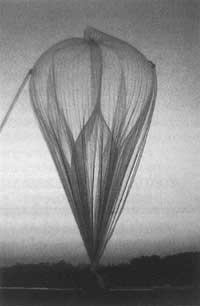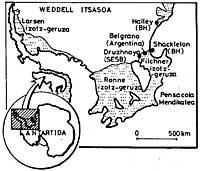Ozone: toxic but essential
1992/05/01 Elhuyar Zientzia Iturria: Elhuyar aldizkaria
Although ozone inhalation is harmful, the effect of atmospheric ozone on life is not because it protects us from short-wave ultraviolet rays.
The ozone is extended along the stratosphere and if we compressed it to the pressure of an atmosphere we would have a layer of 3 mm thick. On the other hand, a 1% decrease in ozone levels represents a 2% increase in the number of ultraviolet rays in the sun. Although this growth can be supported in a short period of time, if prolonged would have negative consequences.

Therefore, if short-wave rays are not filtered, current living beings will not last, but those who have the ability to withstand those waves. On Earth other creatures will live and life created under ozone protection will be lost.
The plants would barely grow, deform and end up dying. Some galsoros in the southern hemisphere have dried up due to ultraviolet rays.
Marine plankton is also in grave danger. Do not forget that plankton is the basis of the food chain and oxygen production (50% of the terrestrial oxygen is produced by plankton). Plankton captures carbon dioxide. If plankton disappears, carbon dioxide will rise greatly into the atmosphere and the greenhouse effect will intensify.
In humans, ultraviolet rays mainly cause three effects:
- If the person is outdoors for a long time and without protecting his skin, there is a risk of skin cancer.
- The immune system can weaken, so there is a higher risk of disease.
- They damage the eyes and leave the blind person.

Gai honi buruzko eduki gehiago
Elhuyarrek garatutako teknologia





